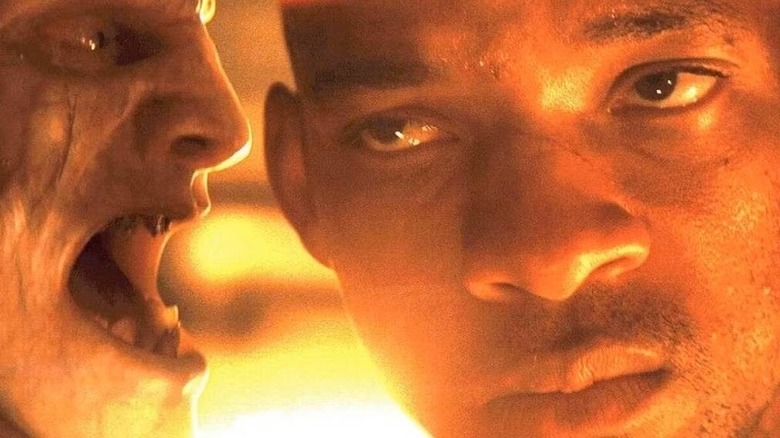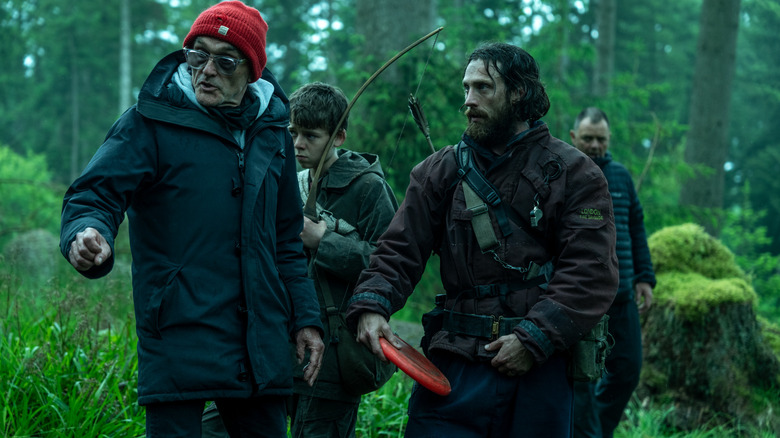28 Years Later Secretly Adapts One Of The Greatest Horror Stories Ever Written

Repent, major spoilers are extremely f***king nigh. Read no further unless you’ve watched “28 Years Later.”
When “28 Days Later” first arrived in 2002 and essentially kickstarted our modern obsession with the undead, director Danny Boyle and writer Alex Garland couldn’t have possibly envisioned what that scrappy little film would lead to in the span of over two decades. “28 Years Later” feels like the culmination of that creative partnership, leading to a zombie thriller that’s both terrifying and surprisingly emotional. Not only does this legacy sequel actually get us invested in a whole new batch of characters (led by Aaron Taylor-Johnson as the stubborn family patriarch Jamie, Jodie Comer as his sickly wife Isla, and Alfie Williams as their son Spike), but it somehow introduces all sorts of new wrinkles to the genre that we might not have even anticipated. New types of infected, new additions to long-standing lore, and a truly bonkers ending that will leave audiences divided will garner all the biggest headlines — but don’t overlook what may go down as the boldest and unlikeliest aspect of the year’s most audacious movie.
That’s because “28 Years Later” isn’t merely a follow-up to both “28 Days Later” and “28 Weeks Later,” but a secret adaptation (of sorts) of one of the most celebrated and acclaimed post-apocalyptic stories in all of fiction. Allow me to explain. Much of the first half of the movie plays out like a typical coming-of-age story set at the end of the world, where Jamie forces his son Spike out of his comfortable and isolated island home to venture out into the infected mainland. It seems like this rite of passage will take up the bulk of the runtime — the pair go exploring, something goes horribly wrong, and the two have to fight to prevent catastrophic events from happening to their home. Instead, the second half pulls the rug out from under us with one big twist: the infected are smarter and more socialized than we thought they were, as proven by that grisly pregnancy scene and everything that follows.
The result is a franchise sequel that sneaks in the best adaptation of author Richard Matheson’s “I Am Legend” novel that we’ve ever seen.
The legacy of I Am Legend looms large in the zombie genre in general and 28 Years Later in particular
This may come as a shock to your uncle who’s just really into the 2007 Will Smith-starring film, but we’ve yet to receive an accurate “I Am Legend” adaptation that actually lives up to the promise of its brilliant source material … until now. In 1954, novelist Richard Matheson debuted a chilling, cerebral, and utterly ahead-of-its-time story about a lone survivor in a world overrun by a pandemic. Other than our main protagonist Robert Neville, those who remain aren’t really “people” anymore; they’re vampires — not zombies — with characteristics taken straight out of classic folklore. (Those who wish to read the book for themselves and somehow haven’t heard about what goes down by now would be well-advised to turn back immediately, since we’re going to go ahead and spoil the main thrust of the plot from this point onwards.)
In the novel, Neville spends years killing, capturing, and ultimately experimenting on various individuals he comes across in a desperate bid to find a cure. Only after an intense (and romantic) series of encounters with a female vampire that he assumes to be human, however, does Neville slowly come to understand that his foes aren’t the mindlessly savage and deranged creatures he thought them to be. If anything, this new and shockingly humanlike society of vampires look upon him as the boogeyman who’s been haunting their every step. With that perspective in mind, Neville’s inevitable capture and condemnation by humanity’s replacements takes on a whole new outlook. Realizing that his actions made him seem like the monster he thought the vampires were all along, Neville accepts his fate and imagines himself ironically turning into the stuff of campfire stories and legends.
Does any of that sound familiar?
With 28 Years Later, Danny Boyle and Alex Garland deliver the I Am Legend adaptation we’ve been waiting for
In 2025, it’s plain to see that “I Am Legend” continues to cast a long shadow over our entertainment, as with this year’s “Sinners.” Now, it’s time for “28 Years Later” to deliver as faithful a rendering of the overall themes of the original book as we’ve ever seen on film before. Director Danny Boyle and writer Alex Garland could’ve gone any number of ways with this sequel, including simply structuring the entire script around Cillian Murphy’s bicycle courier Jim from the first movie. Instead, they threw all of that out the window (until the next sequel, that is) and started from scratch — and, in the process, took things down a much more fascinating road.
It all starts when “28 Years Later” first depicts the Alpha, which we’re told are a much more intelligent and dangerous strain of infected. It’s scary enough that they’re clearly more aware and organized than their usual mindless counterparts, but things take an even more significant turn later on in the film. When Spike recklessly (though understandably) leads his terminally-ill mother Isla through the mainland to find the possibly insane doctor (Ralph Fiennes’ Dr. Kelson) that his father only speaks of in whispers, they encounter the most shocking twist of all: an infected and very pregnant woman giving birth to what seems to be a perfectly uninfected child … along with the nearby Alpha who certainly appears to be the father. Although never actually spelled out, it’s clear that this infected family unit is hardly unique in this world. (Remember that opening hunt early on, in which Spike and Jamie slaughter what certainly appears to be another group of infected parents and kids minding their own business?)
The mere suggestion that our main characters have been wreaking havoc on creatures who might be more human than we ever thought them to be opens up a world of implications for the movies to come. Will the sequel center on Spike reuniting with his estranged father Jamie and convincing him that their brutal behavior towards the infected has actually been morally wrong? We’ll have to wait to see what sequel director Nia DaCosta is cooking, but until then you we revisit “28 Years Later” in theaters now.
Source link








